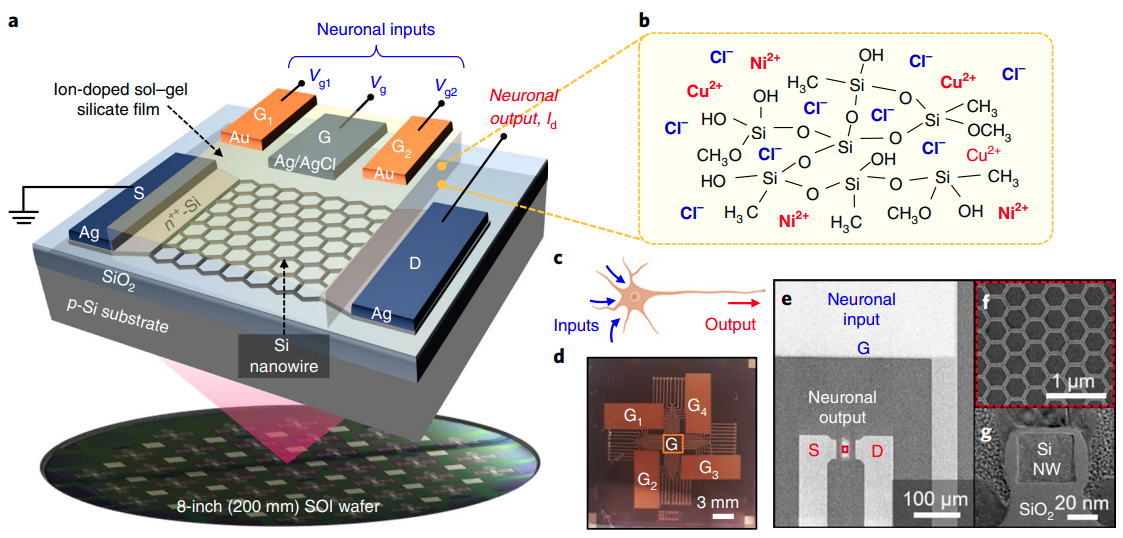

Neuromorphic architectures merge learning and memory functions within a single unit cell and in a neuron-like fashion. Research in the field has been mainly focused on the plasticity of artificial synapses. However, the intrinsic plasticity of the neuronal membrane is also important in the implementation of neuromorphic information processing. Here we report a neurotransistor made from a silicon nanowire transistor coated by an ion-doped sol–gel silicate film that can emulate the intrinsic plasticity of the neuronal membrane. The neurotransistors are manufactured using a conventional complementary metal–oxide–semiconductor process on an 8-inch (200 mm) silicon-on-insulator wafer. Mobile ions allow the film to act as a pseudo-gate that generates memory and allows the neurotransistor to display plasticity. We show that multiple pulsed input signals of the
eurotransistor are non-linearly processed by sigmoidal transformation into the output current, which resembles the functioning of a neuronal membrane. The output response is governed by the input signal history, which is stored as ionic states within the silicate film, and thereby provides the neurotransistor with learning capabilities.




Neuromorphic architectures merge learning and memory functions within a single unit cell and in a neuron-like fashion. Research in the field has been mainly focused on the plasticity of artificial synapses. However, the intrinsic plasticity of the neuronal membrane is also important in the implementation of neuromorphic information processing. Here we report a neurotransistor made from a silicon nanowire transistor coated by an ion-doped sol–gel silicate film that can emulate the intrinsic plasticity of the neuronal membrane. The neurotransistors are manufactured using a conventional complementary metal–oxide–semiconductor process on an 8-inch (200 mm) silicon-on-insulator wafer. Mobile ions allow the film to act as a pseudo-gate that generates memory and allows the neurotransistor to display plasticity. We show that multiple pulsed input signals of the
eurotransistor are non-linearly processed by sigmoidal transformation into the output current, which resembles the functioning of a neuronal membrane. The output response is governed by the input signal history, which is stored as ionic states within the silicate film, and thereby provides the neurotransistor with learning capabilities.

